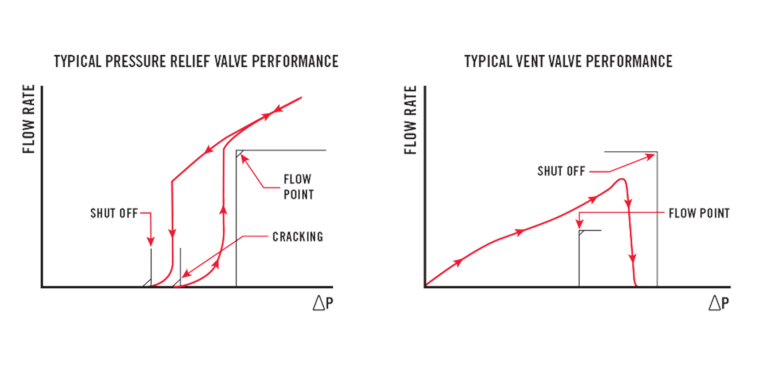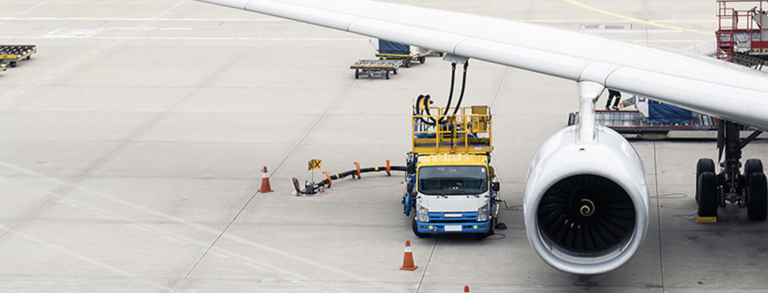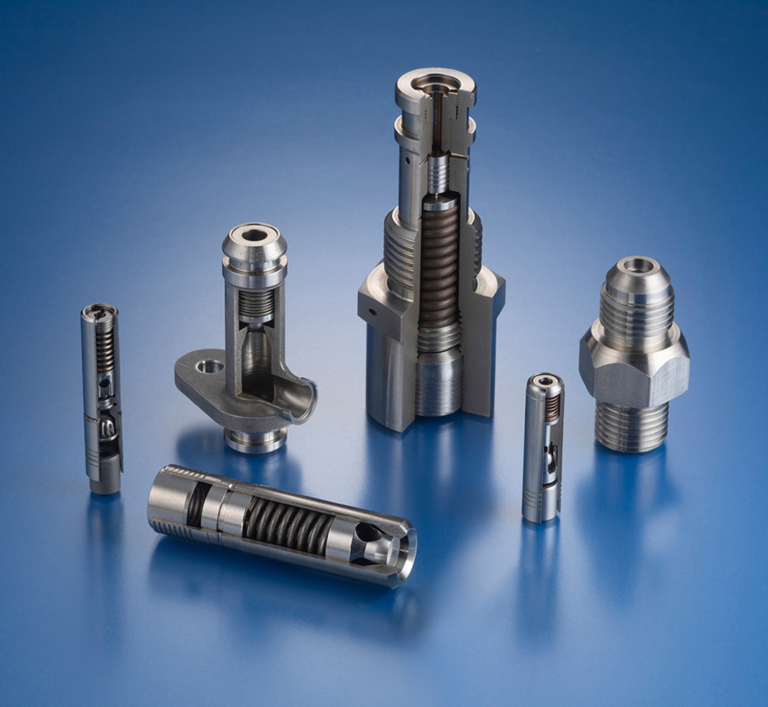There are seven critical requirements for engineers to consider when selecting valves to control fuel flow during aircraft shutdown. Fuel system valves must provide precise flow and maintain tight leakage when subjected to the unique and challenging environments of engine ecology systems.
Potential Adverse Effects of Residual Fuel in Aircraft Engines Post Shutdown
Unlike the driver of a car equipped with an internal combustion engine, an airline pilot cannot restart a commercial aircraft’s engine immediately after landing. It is critical to have fuel in the distribution manifold during engine start-up and during operation. However, residual fuel remaining in the engine’s combustion chamber following shutdown may adversely impact the engine and the environment. Issues that may arise include:
These issues provide sufficient incentive to recover residual fuel in an aircraft engine following landing. Additional reasons to do so are directives for fuel venting and exhaust emissions outlined by the FAA and the EPA Clean Air Act (see Federal Aviation Regulation title 14 part 34). Thankfully, engine design engineers developed a solution: an ecology valve that allows for the safe drainage and storage of working fuel upon aircraft shutdown.
Ecology Valves Are the Answer
Ecology valves purge residual fuel from the engine during shut down and return that fuel to the engine when it restarts. During engine operation, the ecology valve is closed and unpressurized. At engine shutdown, the inlet port to the ecology valve opens, and fuel is suctioned from the flow divider manifold to the sump chamber. This helps prevent injection nozzle coking and stops fuel from draining into the combustion chamber; furthermore, it mitigates the formation of clouds of smoke during the next start-up. During engine startup, the actuation chamber of the ecology valve is pressurized and returns fuel contained in the sump to the fuel divider manifold. To maximize performance, the ecology valve must suction just the right amount of fuel: enough to prevent the issues mentioned above while assuring sufficient fuel remains to allow for a proper restart. This may be accomplished through the use of a valve between the fuel manifold and the ecology valve.
Pressure Relief Valves or Vent Valves Are Critical to Ecology Valve Performance
Pressure conditions change during engine shutdown: either a pressure relief valve or a vent valve may be used to precisely control the volume of flow into the sump chamber of the ecology valve. A pressure relief valve is a normally closed valve that opens when the differential pressure across the valve increases above a specified level. This may occur when a pressure differential is generated by suction from the ecology valve as it opens during shutdown; the relief valve will then open and fuel will drain into the ecology valve.
A vent valve is a normally open valve that allows relief flow during low-pressure conditions and shuts off when the differential pressure across the valve reaches a specified level. The vent valve may be used when there is no pressure differential during shut down, and the valve allows the flow of excess fuel to drain. When the engine is in operation, the air in the combustion chamber is pressurized and closes the vent valve to shut off flow. The system architecture will determine which valve is appropriate for the intended application. However, either of these valves will face similar challenges.

Components Used in Ecology Fuel Systems Must Withstand Extreme Conditions
To ensure ecology valves operate properly, design engineers must select durable components capable of precise performance and able to withstand all aspects of the fuel system environment. Fuel system components must provide precise flow and maintain tight leakage when subjected to high levels of vibration, extreme heat, and the high number of endurance cycles required by an aircraft engine.

Critical Requirements for Pressure Relief Valves and Vent Valves Controlling Fuel to Ecology Valves
The unique and challenging environments of engine ecology systems necessitate that careful consideration is given to the selection of valves. It is important to factor in the following requirements prior to making a decision:

The Lee Company offers a wide range of miniature pressure relief valves and vent valves qualified to exceed aircraft engine standards. We meet the performance requirements for miniature valve configurations intended for applications where the valve must quickly respond when specified differential pressure is reached. These valves are designed to have very low internal leakage when in the closed position; they are also durable and handle high levels of vibration and extreme temperature for the life of the engine.
Standard Lee valves employ a patented locking end for easy installation. The Lee Company can supply valves as line removable units (LRUs) in standard line-mount fittings or in custom-designed envelopes to help reduce costs associated with MRO.
We also offer the option to include integral safety screens on all valve designs as additional protection from rogue contamination or debris. Download the Technical Hydraulic Handbook for more information about our fluid control solutions, including vent valves, pressure relief valves, and more.
To obtain more detailed information about selecting pressure relief valves, performance trade-offs, and common failure modes, download our eBook: An Engineer’s Guide to Selecting a Pressure Relief Valve.

A variety of pressure relief valves and vent valves available from The Lee Company
The Lee Company supplies thousands of parts on every commercial and military aircraft flying overhead. In addition to their location upstream of ecology valves, they can be found throughout the fuel, lubrication, and bleed air systems. Click here to view our Aircraft Engine Solutions Brochure and learn where Lee components are used on other engine applications.
The Lee Company has been at the forefront of fluid control technology since 1948, supplying millions of innovative products worldwide from our state-of-the-art manufacturing facilities in Connecticut, USA. We transform complex problems into deliverable solutions through ongoing research, design, development, and our commitment to quality and innovation. Our in-depth application knowledge enables us to collaborate with customers and provide personal, technical support through a wide network of experienced sales engineers who are ready to address any challenge.
Always verify flow calculations by experiment.
*There are many parameters to consider when determining V-Factor. Click here for more information.